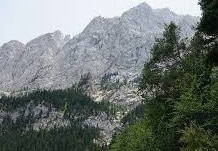 The pavement of a region, a path, a room or other space, which can be natural or artificial, is called a floor . Bioclimatic , meanwhile, is an adjective that refers to what is linked to living beings and the climate.
The pavement of a region, a path, a room or other space, which can be natural or artificial, is called a floor . Bioclimatic , meanwhile, is an adjective that refers to what is linked to living beings and the climate.
The idea of a bioclimatic floor , in this framework, refers to the space that seeks to take advantage of environmental conditions for the well-being or benefit of its users or inhabitants . These are units with different altitudinal locations that, due to this particularity, face different temperatures .
We owe this definition of the concept of bioclimatic floor to Salvador Rivas Martínez , a scientist born in Spain in 1935 who holds a long list of academic titles, including professor, mycologist, biologist and botanist. His father, Salvador Rivas Goday , had similar interests, as he dedicated himself to medicine and also botany .
Rivas Martínez actively participates in the Royal Academy of Exact, Physical and Natural Sciences , which is public and is dedicated to studying and researching various sciences , such as chemistry, physics, biology and mathematics. His passion for mountaineering has been essential in his work because it has allowed him to approach nature from various points of view often inaccessible to experts.
Bioclimatic floors, therefore, arise from altitudinal stratification . The influence of temperatures and precipitation varies depending on the territorial layout and even changes during the year due to the change of seasons .
You can easily notice the existence of bioclimatic floors in the mountains , for example. The vegetation found at the base is not the same as in the middle or at the summit , and this is due to thermal differences and how rainfall affects each of the areas.
The development of bioclimatic floors, in short, obeys the ombroclimatic (precipitation) and thermoclimatic (temperature) variations that arise due to altitude . This produces modifications in ecosystems.
 The alpine floor , the mesomediterranean floor , the montane floor and the oromediterranean floor are some of the bioclimatic floors that can be found. In all cases, altitude is the determining factor for its delimitation, beyond other issues that affect its characteristics, such as latitude .
The alpine floor , the mesomediterranean floor , the montane floor and the oromediterranean floor are some of the bioclimatic floors that can be found. In all cases, altitude is the determining factor for its delimitation, beyond other issues that affect its characteristics, such as latitude .
Although when studying the vegetation of all ecological gradients it is possible to notice zones, these become more evident in the mountains. According to certain experts, the changes that are seen in the vegetation cover when ascending a mountain can be similar to what is seen on a trip from the Equator to a pole if the sections of one hundred meters are compared with those of one hundred kilometers, in altitude. and latitude respectively; However, this is relative.
The most considerable changes occur due to the decrease in temperature (which can be 0.65 degrees Celsius per hundred meters of altitude in an ascending direction) and variations in precipitation (which are less regular). At this point we must introduce a new concept: vegetation floors , the way in which the aforementioned areas are called.
The relationship between these and the bioclimatic floors occurs because it is precisely in this way that the climatic ranges that determine the former are called. In regions whose vegetation floors are different but the phytoclimates are very similar, it is common to notice patterns that are repeated regarding the zoning of the vegetation according to its altitude; something like this takes place in the Mediterranean and in California . Rivas Martínez wanted to establish a comparison between the limits of these floors and some climate values.
